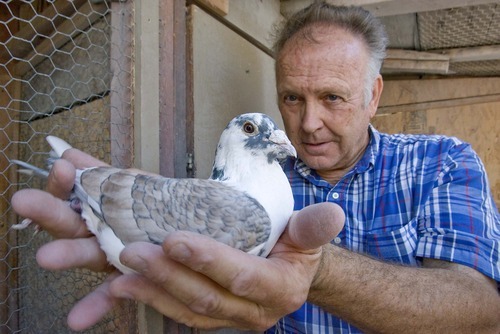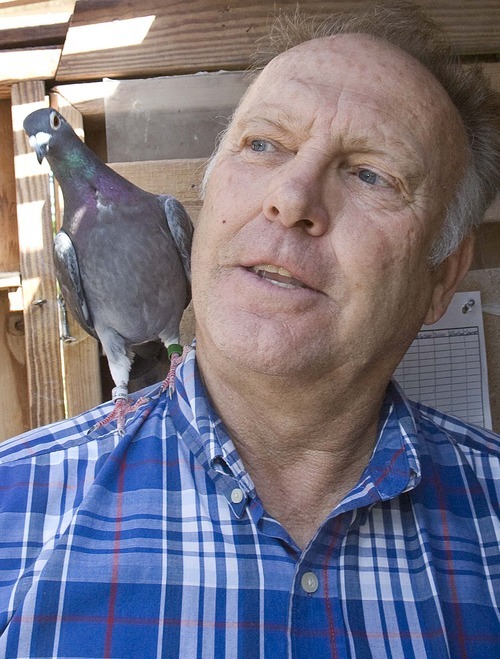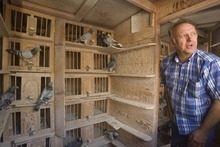This is an archived article that was published on sltrib.com in 2011, and information in the article may be outdated. It is provided only for personal research purposes and may not be reprinted.
Editor's note • A version of this story originally appeared in a Close-Up section.
Cottonwood Heights • Ron Larrabee can detail the pedigrees of the dozens of pigeons in his backyard loft.
He can show you the one with a knobby nub under his wing where the bone was probably broken.
He can tell the distance to the mile of the races this bird or that flew in a race last fall, even though the contest might have begun somewhere near Canada and he had three dozen birds in the same race.
But one thing Larrabee was not able to say for many years was that his pigeon flock was legal. Larrabee, like other "fliers," kept more birds than city law allowed and had been allowed to do so "with a wink and nod" for decades.
That changed last month, when the city updated its animal ordinances to bring pigeon racing into the legal fold.
"We wanted something to protect us," said Larrabee, who has been a serious pigeon flier since the 1970s.
It's hard to imagine Larrabee as an outlaw. He's taken great pains to make his hobby friendly for his neighbors.
The structure he built to house his birds is about the size of a single-car garage, double-long, segmented into five "rooms" that each house a few dozen birds of similar age, sex and function. The loft is dug into the ground by about two feet — a design feature that helped to make it impossible for someone on the street to know that it was anything other than an ordinary building.
Larrabee keeps the place clean and dry. So, it's only the steady, gentle cooing that gives the occupants away. They are right outside Larrabee's bedroom window. Only some are let out for exercise, and then only for minutes or hours with the lure of food and clean water back in their loft.
"I just love to come out and look at 'em," he said during a recent loft tour of his birds in a neutral-tone palette of grays, whites and browns dusted on the neck with iridescent green and pink.
Larrabee is also the first to tell you he loves to race pigeons, too.
"I just enjoy flying pigeons, the competition," Larrabee added, noting that winning is not a priority — a good thing, given he has won only nine times in three years.
It was Gordon Thomas, Larrabee's neighbor and representative on the City Council, who suggested a couple of years ago that it would be a good idea to bring the animal ordinance into sync with the reality of pigeon hobbyists.
Thomas recalls that he first had to get over his prejudices, like lumping the sort of carefully bred racers that Larrabee keeps with the ones reviled for loitering on city sidewalks and soiling them.
In contrast, he learned, the sort of pigeons Larrabee keeps are "really different, really beautiful."
Larrabee helped the council develop the new law, which fielded no public comments during a July hearing.
It requires pigeon enthusiasts to register with the city. Owners also have to keep the lofts clean and odor-free. Violating the law is a class B misdemeanor, carrying penalties comparable to a drunken driving charge. And it makes provisions for homing pigeon fliers like Larrabee, who now have the legal right to keep up to 200 registered birds.
"I wouldn't want to do it," Thomas said of pigeon racing. "But it is very fascinating."













